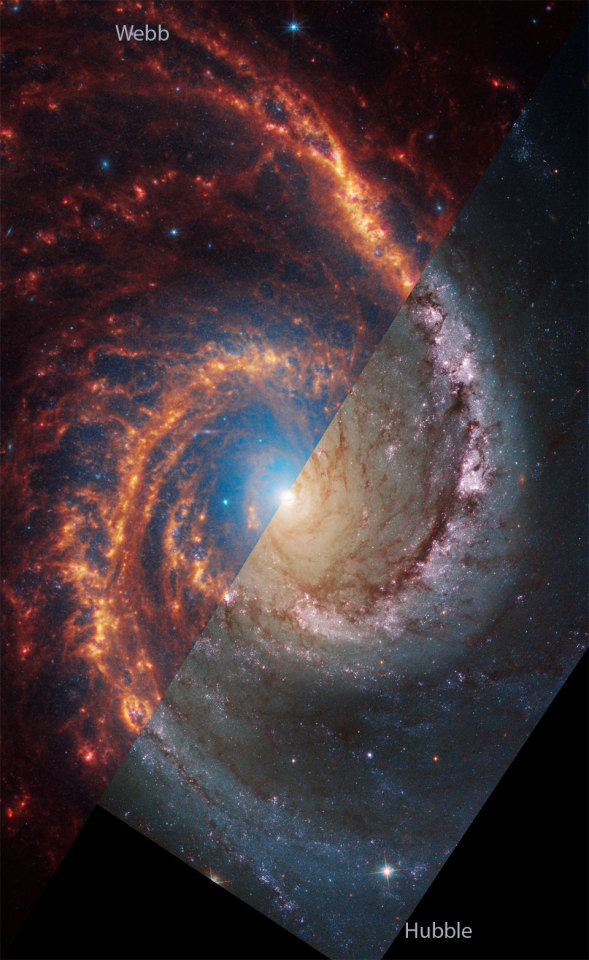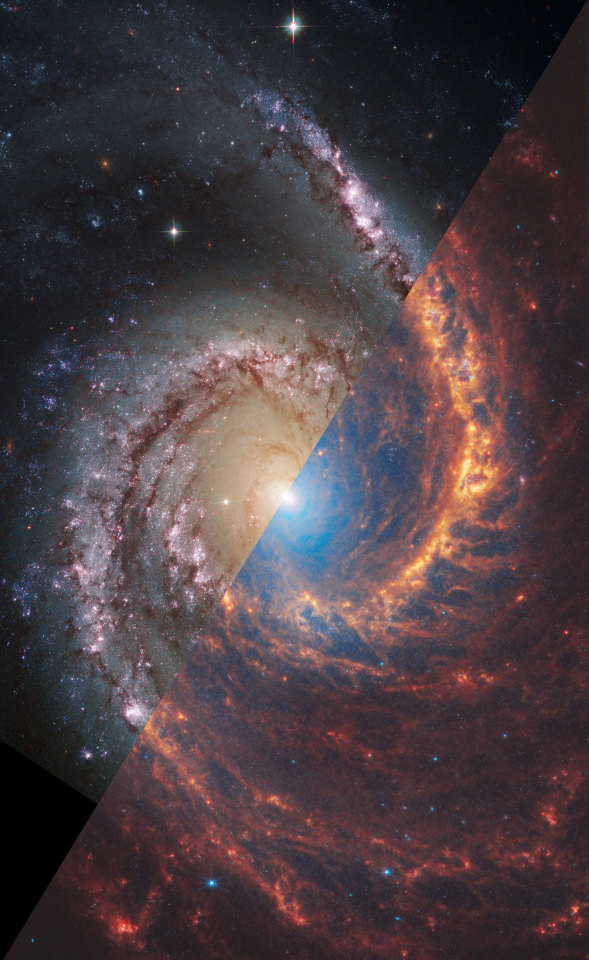Bioluminescence And Milky Way

Bioluminescence and Milky Way
More Posts from Ad-astra-affecte-spe and Others
this morning NASA abandoned their mars rover Opportunity (aka Oppy) because it (she) got hit by a storm on Mars and it knocked her camera and wheels out and her last words to the team were “my battery is low and it is getting cold”. I know she’s a machine but I’m devastated. Oppy is the one who discovered water on Mars. RIP oppy ily space baby

M85 (center right) and NGC 4394 (center left) // Bart Delsaert
M85 is an elliptical galaxy, but one that has a complex series of shells and ripples. These features are thought to have been created some 4-7 billion years ago when it merged with another galaxy. It is currently interacting with the barred spiral galaxy NGC 4394, which might be supporting the shells' structure.
This galaxy was an original discovery of Méchain's in 1781 and is an isolated member of the Virgo Cluster, about 60 million light years away.

Earth, which is about 898 million miles (1.44 billion kilometers) away in this image, captured by NASA's Cassini spacecraft 🚀
Cosmic Alphabet Soup: Classifying Stars

If you’ve spent much time stargazing, you may have noticed that while most stars look white, some are reddish or bluish. Their colors are more than just pretty – they tell us how hot the stars are. Studying their light in greater detail can tell us even more about what they’re like, including whether they have planets. Two women, Williamina Fleming and Annie Jump Cannon, created the system for classifying stars that we use today, and we’re building on their work to map out the universe.

By splitting starlight into spectra – detailed color patterns that often feature lots of dark lines – using a prism, astronomers can figure out a star’s temperature, how long it will burn, how massive it is, and even how big its habitable zone is. Our Sun’s spectrum looks like this:

Astronomers use spectra to categorize stars. Starting at the hottest and most massive, the star classes are O, B, A, F, G (like our Sun), K, M. Sounds like cosmic alphabet soup! But the letters aren’t just random – they largely stem from the work of two famous female astronomers.

Williamina Fleming, who worked as one of the famous “human computers” at the Harvard College Observatory starting in 1879, came up with a way to classify stars into 17 different types (categorized alphabetically A-Q) based on how strong the dark lines in their spectra were. She eventually classified more than 10,000 stars and discovered hundreds of cosmic objects!

That was back before they knew what caused the dark lines in spectra. Soon astronomers discovered that they’re linked to a star’s temperature. Using this newfound knowledge, Annie Jump Cannon – one of Fleming’s protégés – rearranged and simplified stellar classification to include just seven categories (O, B, A, F, G, K, M), ordered from highest to lowest temperature. She also classified more than 350,000 stars!

Type O stars are both the hottest and most massive in the new classification system. These giants can be a thousand times bigger than the Sun! Their lifespans are also around 1,000 times shorter than our Sun’s. They burn through their fuel so fast that they only live for around 10 million years. That’s part of the reason they only make up a tiny fraction of all the stars in the galaxy – they don’t stick around for very long.

As we move down the list from O to M, stars become progressively smaller, cooler, redder, and more common. Their habitable zones also shrink because the stars aren’t putting out as much energy. The plus side is that the tiniest stars can live for a really long time – around 100 billion years – because they burn through their fuel so slowly.

Astronomers can also learn about exoplanets – worlds that orbit other stars – by studying starlight. When a planet crosses in front of its host star, different kinds of molecules in the planet’s atmosphere absorb certain wavelengths of light.
By spreading the star’s light into a spectrum, astronomers can see which wavelengths have been absorbed to determine the exoplanet atmosphere’s chemical makeup. Our James Webb Space Telescope will use this method to try to find and study atmospheres around Earth-sized exoplanets – something that has never been done before.

Our upcoming Nancy Grace Roman Space Telescope will study the spectra from entire galaxies to build a 3D map of the cosmos. As light travels through our expanding universe, it stretches and its spectral lines shift toward longer, redder wavelengths. The longer light travels before reaching us, the redder it becomes. Roman will be able to see so far back that we could glimpse some of the first stars and galaxies that ever formed.
Learn more about how Roman will study the cosmos in our other posts:
Roman’s Family Portrait of Millions of Galaxies
New Rose-Colored Glasses for Roman
How Gravity Warps Light
Make sure to follow us on Tumblr for your regular dose of space!

Earth as seen through Saturn's ring(Cassini)


Whirlpool Galaxy M51a was the very first galaxy classified as a spiral galaxy.

Andromeda, If It Was Brighter
One of the largest structures in the night sky is visible with the naked eye, but if you live in a city, it's literally hiding just out of sight. Even in a dark area, it's not the easiest to immediately see, but the above image has brightened it up for us, to show us what the galaxy would look like, if only the sky was dark enough and the galaxy was a bit brighter.
The moon comparison is the best one, that is something we can all see in the night sky (unless you live in the UK, where you see mostly clouds).
Now imagine that galaxy stretching several moon-spans across the sky. That I hope gives you a minor taste of what it's like when using a small telescope or even binoculars, you first come across it.
If you live in the Northern Hemisphere, then it's well worth the search.

Near sunset, look for 3 objects which should be easy to locate, Venus and Jupiter (I'll come to this in a moment) low in the sky, the W of Cassiopeia and the Seven Sisters (Pleiades), and from that, you should find the location. Bare in mind it's several times the size of the moon, so you don't have to be too accurate, but if you can find the stars of Andromeda, that will help refine your search.

And finally that brings me on to the real star of the sky currently, Jupiter and Venus, the two brightest planets, very close together.
In fact, if you do have a really good pair of binoculars, or small telescope, this is a great time to view them. Venus often appears as a crescent like a phase of the moon, and Jupiter has it's 4 Galilean moons to spot.

Happy Spotting !






Orion, The Great Hunter




Spiral Galaxies from Webb & Hubble: NGC 1566 4303 3351
-
 carlottaragazzaloveeur reblogged this · 1 month ago
carlottaragazzaloveeur reblogged this · 1 month ago -
 carlottaragazzaloveeur liked this · 1 month ago
carlottaragazzaloveeur liked this · 1 month ago -
 slocoman69 liked this · 3 months ago
slocoman69 liked this · 3 months ago -
 christophertbublitz liked this · 4 months ago
christophertbublitz liked this · 4 months ago -
 chaoticmusiccollectors reblogged this · 4 months ago
chaoticmusiccollectors reblogged this · 4 months ago -
 cherrykryptonite reblogged this · 4 months ago
cherrykryptonite reblogged this · 4 months ago -
 pinayprincessvixen liked this · 4 months ago
pinayprincessvixen liked this · 4 months ago -
 mriya2000 liked this · 4 months ago
mriya2000 liked this · 4 months ago -
 uncovering-the-fetish reblogged this · 4 months ago
uncovering-the-fetish reblogged this · 4 months ago -
 uncovering-the-fetish liked this · 4 months ago
uncovering-the-fetish liked this · 4 months ago -
 pinkwinkerluvs269 reblogged this · 4 months ago
pinkwinkerluvs269 reblogged this · 4 months ago -
 uschi-the-listener liked this · 4 months ago
uschi-the-listener liked this · 4 months ago -
 shortstacksworld liked this · 4 months ago
shortstacksworld liked this · 4 months ago -
 lonewolfnthewild reblogged this · 4 months ago
lonewolfnthewild reblogged this · 4 months ago -
 made1pointless reblogged this · 4 months ago
made1pointless reblogged this · 4 months ago -
 made1pointless liked this · 4 months ago
made1pointless liked this · 4 months ago -
 strawberryjayne liked this · 4 months ago
strawberryjayne liked this · 4 months ago -
 cracksinmyimperfectsoul reblogged this · 4 months ago
cracksinmyimperfectsoul reblogged this · 4 months ago -
 cracksinmyimperfectsoul liked this · 4 months ago
cracksinmyimperfectsoul liked this · 4 months ago -
 north-star-dreamer-69 reblogged this · 4 months ago
north-star-dreamer-69 reblogged this · 4 months ago -
 north-star-dreamer-69 liked this · 4 months ago
north-star-dreamer-69 liked this · 4 months ago -
 cielo81309 reblogged this · 4 months ago
cielo81309 reblogged this · 4 months ago -
 sense-of-sight liked this · 4 months ago
sense-of-sight liked this · 4 months ago -
 lonewolfnthewild liked this · 4 months ago
lonewolfnthewild liked this · 4 months ago -
 celestial-querencia-quaintrelle reblogged this · 4 months ago
celestial-querencia-quaintrelle reblogged this · 4 months ago -
 celestial-querencia-quaintrelle liked this · 4 months ago
celestial-querencia-quaintrelle liked this · 4 months ago -
 coconutsandchlorine liked this · 4 months ago
coconutsandchlorine liked this · 4 months ago -
 pgreen37 reblogged this · 5 months ago
pgreen37 reblogged this · 5 months ago -
 rjccjsplace reblogged this · 5 months ago
rjccjsplace reblogged this · 5 months ago -
 rjccjsplace reblogged this · 5 months ago
rjccjsplace reblogged this · 5 months ago -
 thinkofscotland liked this · 6 months ago
thinkofscotland liked this · 6 months ago -
 holistic-eclectic reblogged this · 6 months ago
holistic-eclectic reblogged this · 6 months ago -
 kikisloane liked this · 6 months ago
kikisloane liked this · 6 months ago -
 chrissy0007 liked this · 6 months ago
chrissy0007 liked this · 6 months ago -
 colourful-dimension liked this · 6 months ago
colourful-dimension liked this · 6 months ago

★•Astronomy, Physics, and Aerospace•★ Original and Reblogged Content curated by a NASA Solar System Ambassador
204 posts




